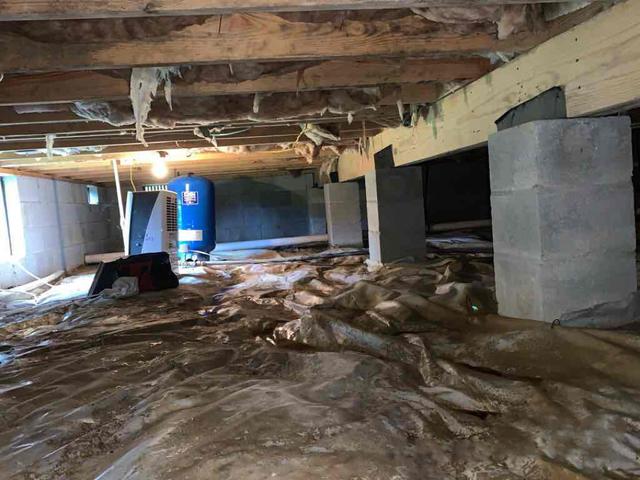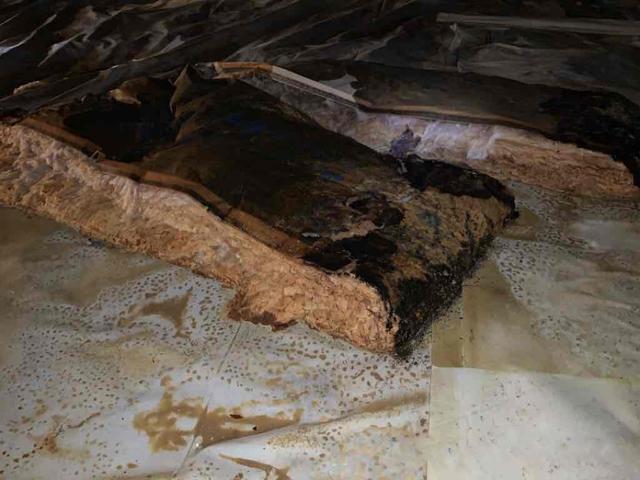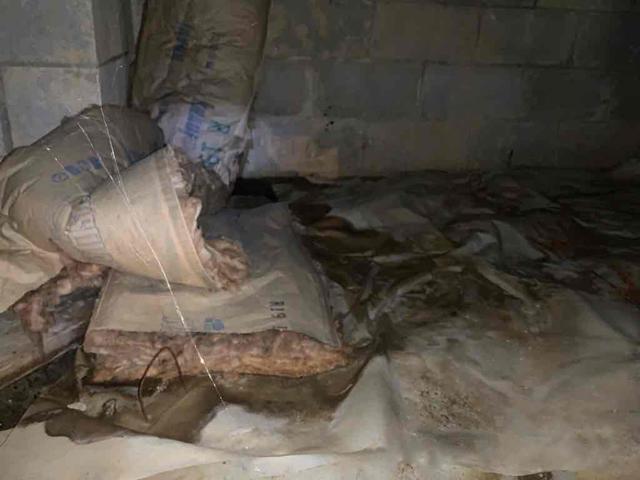
Vapor Barrier
This standard 6-mil vapor barrier is quite common in Virginian homes but offers little-to-no protection from the moisture rising from the earth. These liners are easily torn by service people or get bunched up into the corners of the crawl space. The vapor barrier in this photo is covered in mud and water, suggesting water leakage and high relative humidity, caused by infiltrating moisture from the outside.

Mold Growth
The paper-backing of this fallen fiberglass insulation is covered in mold growth. Mold and mildew will thrive on any organic material in the crawl space, so long as the relative humidity is above 60% and the temperature is at least 70 degrees Fahrenheit. These paper-backings are like "mold candy" and suggest that there is a large amount of outside influence within this crawl space.

Multiple Crawl Space Issues
This picture shows multiple issues within this crawl space. The fiberglass insulation batts have fallen out of the floor joists and are adding to the overall debris found on the crawl floor. This is most likely due to high moisture content causing the fiberglass to become too heavy from holding so much water. The vapor barrier underneath is covered in mud and water puddles, suggesting leaks or even condensation, which tell us that the relative humidity is quite high. Efflorescence is visible, which means water infiltrated through the porous walls, bringing along with it the salts and sediments from within the cinderblock walls. All in all, this crawl space will need to be cleared of all debris and old material and sealed and insulated to protect from the outside, to prevent these moisture problems from occurring again.


